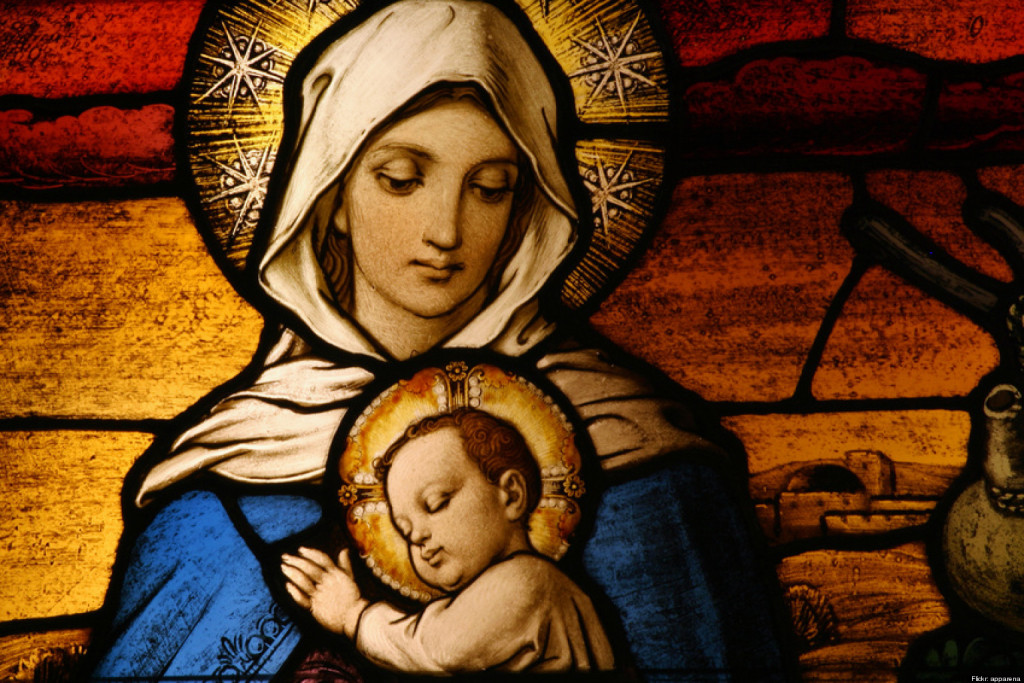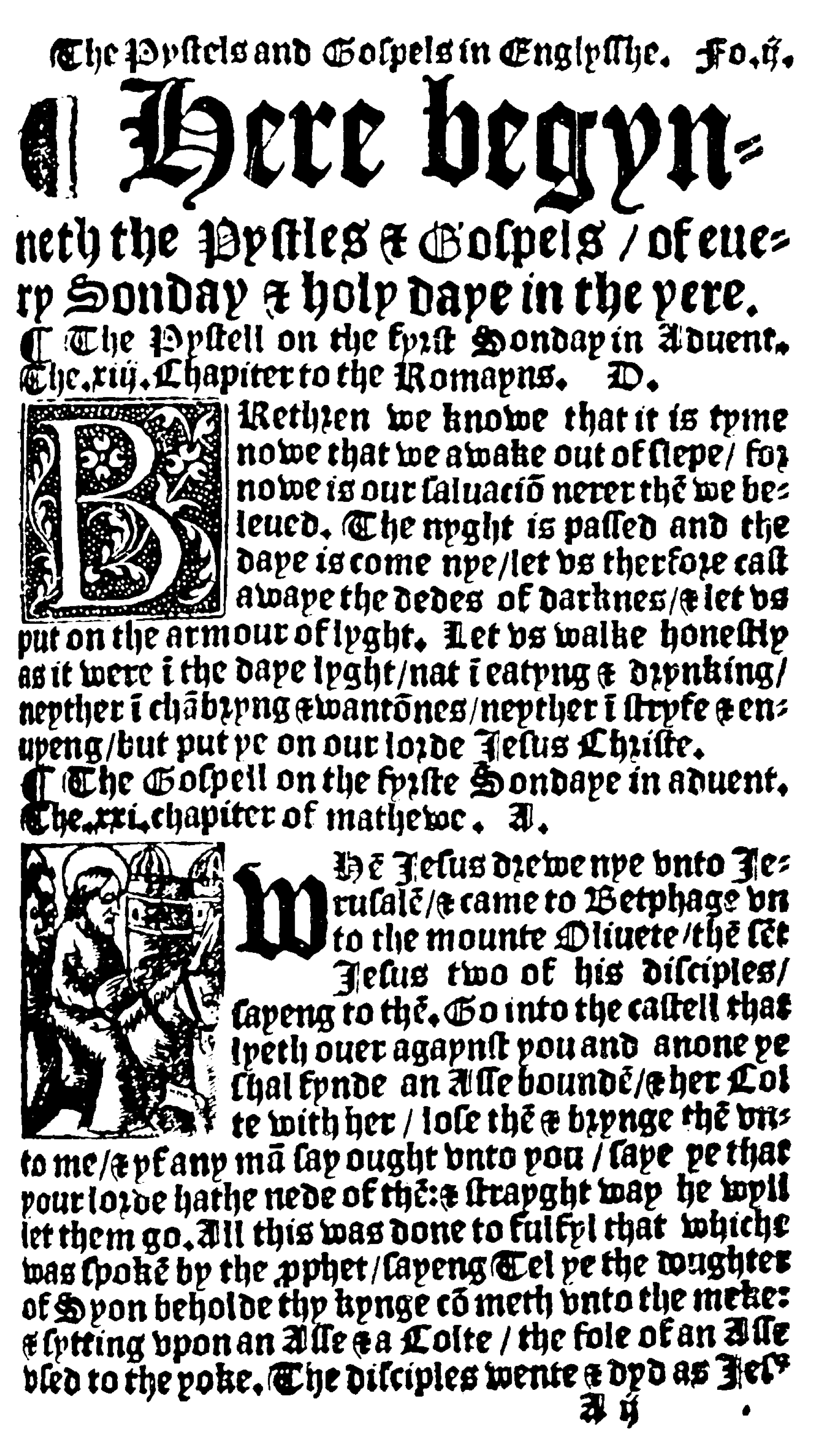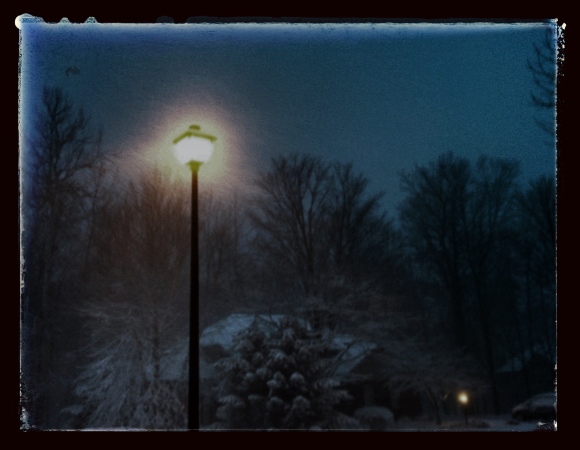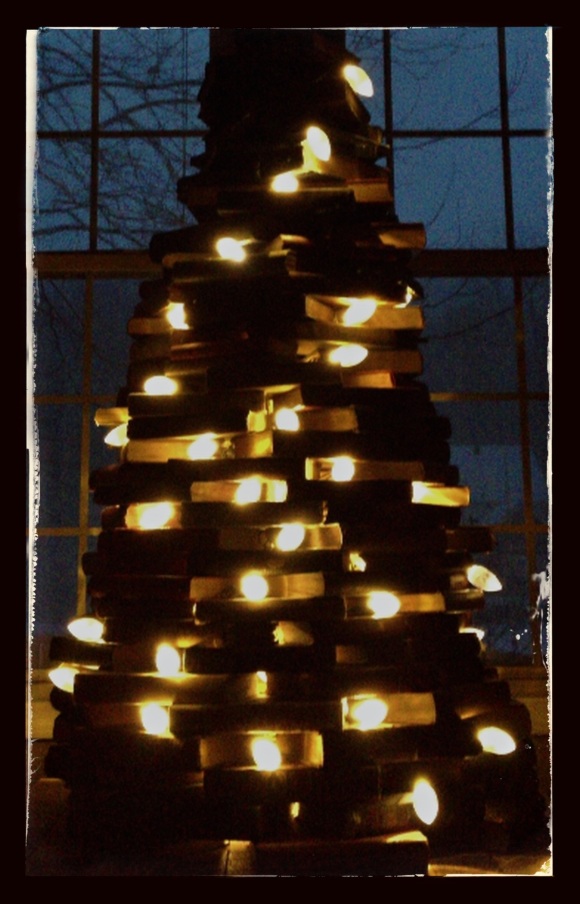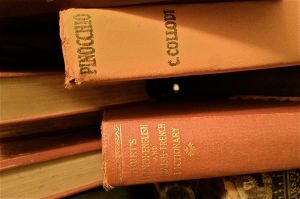In December of 1946, Strand Magazine published “A Christmas Sermon for Pagans” by C. S. Lewis. Anyone who has read Lewis extensively will recognize many of the themes within this short essay, primarily that the journey to Christianity for a post-Christian may quite possibly include a short passage through paganism (paganism as it really is, not as we sometimes foolishly imagine it). From the essay: “If the modern post-Christian view is wrong—and every day I find it harder to think it right—then there are three kinds of people in the world. (1) Those who are sick and don’t know it (the post-Christians). (2) Those who are sick and know it (Pagans). (3) Those who have found the cure. And if you start in the first class you must go through the second to reach the third. For (in a sense) all that Christianity adds to Paganism is the cure. It confirms the old belief that in this universe we are up against Living Power: that there is a real Right and that we have failed to obey it: that existence is beautiful and terrifying. It adds a wonder of which Paganism had not distinctly heard—that the Mighty One has come down to help us, to remove our guilt, to reconcile us”
To date, this piece has not been included in any published collection of Lewis essays. It was only discovered several years ago. I have a copy and thought all Lewisians would enjoy seeing the essay and reading a transcription (included below).
Merry Christmas to all. Thanks be to God that because of King Jesus, we need never lament that it is always winter and never Christmas. Rather, it is always Christmas, always Immanuel, always God-with-us, no matter what the weather.




“A Christmas Sermon for Pagans” by C. S. Lewis
Strand magazine, Vol. 112, Issue 672, December 1946
Writing religion for sceptics has made C. S. Lewis a best-seller. His books on Christianity—chief among them “The Screwtape Letters”—sell better, and read more easily, than most crime stories. This sermon is a characteristic piece of writing by the Oxford don who has become the most entertaining missionary of our time.
//
When I was asked to write a Christmas sermon for Pagans I accepted the job lightheartedly enough: but now that I sit down to tackle it I discover a difficulty. Are there any Pagans in England for me to write to?
I know that people keep on telling us that this country is relapsing into Paganism. But they only mean it is ceasing to be Christian. And is that at all the same thing? Let us remember what a Pagan or Heathen (I use the words interchangeably) really was.
A “Heathen” meant a man who lived out on the heath, out in the wilds. A “Pagan” meant a man who lived in a Pagus or small village. Both words, in fact, meant a “rustic” or “yokel.” They date from the time when the larger towns of the Roman Empire were already Christianised, but the old Nature religions still lingered in the country. Pagans or Heathens were the backward people in the remote districts who had not yet been converted, who were still pre-Christian.
To say that modern people who have drifted away from Christianity are Pagans is to suggest that a post-Christian man is the same as a pre-Christian man. And that is like thinking that a woman who has lost her husband is the same sort of person as an unmarried girl: or that a street where the houses have been knocked down is the same as a field where no house has yet been built. The ruined street and the unbuilt field are alike in one respect: namely that neither will keep you dry if it rains. But they are different in every other respect. Rubble, dust, broken bottles, old bedsteads and stray cats are very different from grass, thyme, clover, buttercups and a lark singing overhead.
Now the real Pagan differed from the post-Christian in the following ways. Firstly, he was religious. From the Christian point of view he was indeed too religious by half. He was full of reverence. To him the earth was holy, the woods and waters were alive. His agriculture was a ritual as well as a technique. And secondly, he believed in what we now call an “Objective” Right or Wrong. That is, he thought the distinction between pious and impious acts was something which existed independently of human opinions: something like the multiplication table which Man had not invented but had found to be true and which (like the multiplication table) he had better take notice of. The gods would punish him if he did not.
To be sure, by Christian standards, his list of “Right” or “Wrong” acts was rather a muddled one. He thought (and the Christians agreed) that the gods would punish him for setting the dogs on a beggar who came to his door or for striking his father: but he also thought they would punish him for turning his face to the wrong point of the compass when he began ploughing. But though his code included some fantastic sins and duties, it got in most of the real ones.
And this leads us to the third great difference between a Pagan and a post-Christian man. Believing in a real Right and Wrong means finding out that you are not very good. The Pagan code may have been on some points a low one: but it was too high for the Pagan to live up to. Hence a Pagan, though in many ways merrier than a modern, had a deep sadness. When he asked himself what was wrong with the world he did not immediately reply, “the social system,” or “our allies,” or “education.” It occurred to him that he himself might be one of the things that was wrong with the world. He knew he had sinned. And the terrible thing was that he thought the gods made no difference between voluntary and involuntary sins. You might get into their bad books by mere accident, and once in, it was very hard to get out of them. And the Pagan dealt with this situation in a rather silly way. His religion was a mass of ceremonies (sacrifices, purifications, etc.) which were supposed to take away guilt. But they never quite succeeded. His conscience was not at ease.
Now the post-Christian view which is gradually coming into existence—it is complete already in some people and still incomplete in others—is quite different. According to it Nature is not a live thing to be reverenced: it is a kind of machine for us to exploit. There is no objective Right or Wrong: each race or class can invent its own code or “ideology” just as it pleases. And whatever may be amiss with the world, it is certainly not we, not the ordinary people; it is up to God (if, after all, He should happen to exist), or to Government or to Education, to give us what we want. They are the shop, we are the customers: and “the customer is always right.”
Now if the post-Christian view is the correct one, then we have indeed waked from a nightmare. The old fear, the old reverence, the old restraints—how delightful to have waked up into freedom, to be responsible to no one, to be utterly and absolutely our own masters! We have, of course, lost some fun. A universe of colourless electrons (which is presently going to run down and annihilate all organic life everywhere and forever) is, perhaps, a little dreary compared with the earth-mother and the sky-father, the wood nymphs and the water nymphs, chaste Diana riding the night sky and homely Vesta flickering on the hearth. But one can’t have everything, and there are always the flicks and the radio: if the new view is correct, it has very solid advantages.
But is it? And if so, why are things not going better? What do you make of the present threat of world famine? We know now that it is not entirely due to the war. From country after country comes the same story of failing harvests: even the whales have less oil. Can it be that Nature (or something behind Nature) is not simply a machine that we can do what we like with?—that she is hitting back?
Waive that point. Suppose she is only a machine and that we are free to master her at our pleasure. Have you not begun to see that Man’s conquest of Nature is really Man’s conquest of Man? That every power wrested from Nature is used by some men over other men? Men are the victims, not the conquerors in this struggle: each new victory “over Nature” yields new means of propaganda to enslave them, new weapons to kill them, new power for the State and new weakness for the citizen, new contraceptives to keep men from being born at all.
As for the ideologies, the new invented Wrongs and Rights, does no one see the catch? If there is no real Wrong and Right, nothing good or bad in itself, none of these ideologies can be better or worse than another. For a better moral code can only mean one which comes nearer to some real or absolute code. One map of New York can be better than another only if there is a real New York for it to be truer to. If there is no objective standard, then our choice between one ideology and another becomes a matter of arbitrary taste. Our battle for democratic ideals against Nazi ideals has been a waste of time, because the one is no better than the other. Nor can there ever be any real improvement or deterioration: if there is no real goal you can’t get either nearer to it or farther from it. In fact, there is no real reason for doing anything at all.
It looks to me, neighbours, as though we shall have to set about becoming true Pagans if only as a preliminary to becoming Christians. I don’t mean that we should begin leaving little bits of bread under the tree at the end of the garden as an offering to the Dryad. I don’t mean that we should dance to Dionysus across Hampstead Heath (though perhaps a little more solemn or ecstatic gaiety and a little less commercialised “amusement” might make our holidays better than they now are). I don’t even mean (though I do very much wish) that we should recover that sympathy with nature, that religious attitude to the family, and that appetite for beauty which the better Pagans had. Perhaps what I do mean is best put like this.
If the modern post-Christian view is wrong—and every day I find it harder to think it right—then there are three kinds of people in the world. (1) Those who are sick and don’t know it (the post-Christians). (2) Those who are sick and know it (Pagans). (3) Those who have found the cure. And if you start in the first class you must go through the second to reach the third. For (in a sense) all that Christianity adds to Paganism is the cure. It confirms the old belief that in this universe we are up against Living Power: that there is a real Right and that we have failed to obey it: that existence is beautiful and terrifying. It adds a wonder of which Paganism had not distinctly heard—that the Mighty One has come down to help us, to remove our guilt, to reconcile us.
All of the world (even in Japan, even in Russia) men and women will meet on December 25th to do what is a very old-fashioned and, if you like, a very Pagan thing—to sing and feast because a God has been born. You are uncertain whether it is more than a myth. Well if it is, then our last hope is gone. But is the opposite explanation not worth trying?
Who knows but that here, and here alone, lies your way back not only to Heaven, but to Earth too, and to the great human family whose oldest hopes are confirmed by this story that does not die?
//
For more on “A Christmas Sermon for Pagans” and other things, please visit this post at “A Pilgrim in Narnia” where Brenton Dickieson writes delightful and meticulous posts about all manner of things related to Lewis, Tolkien, other Inklings, literature, and more.
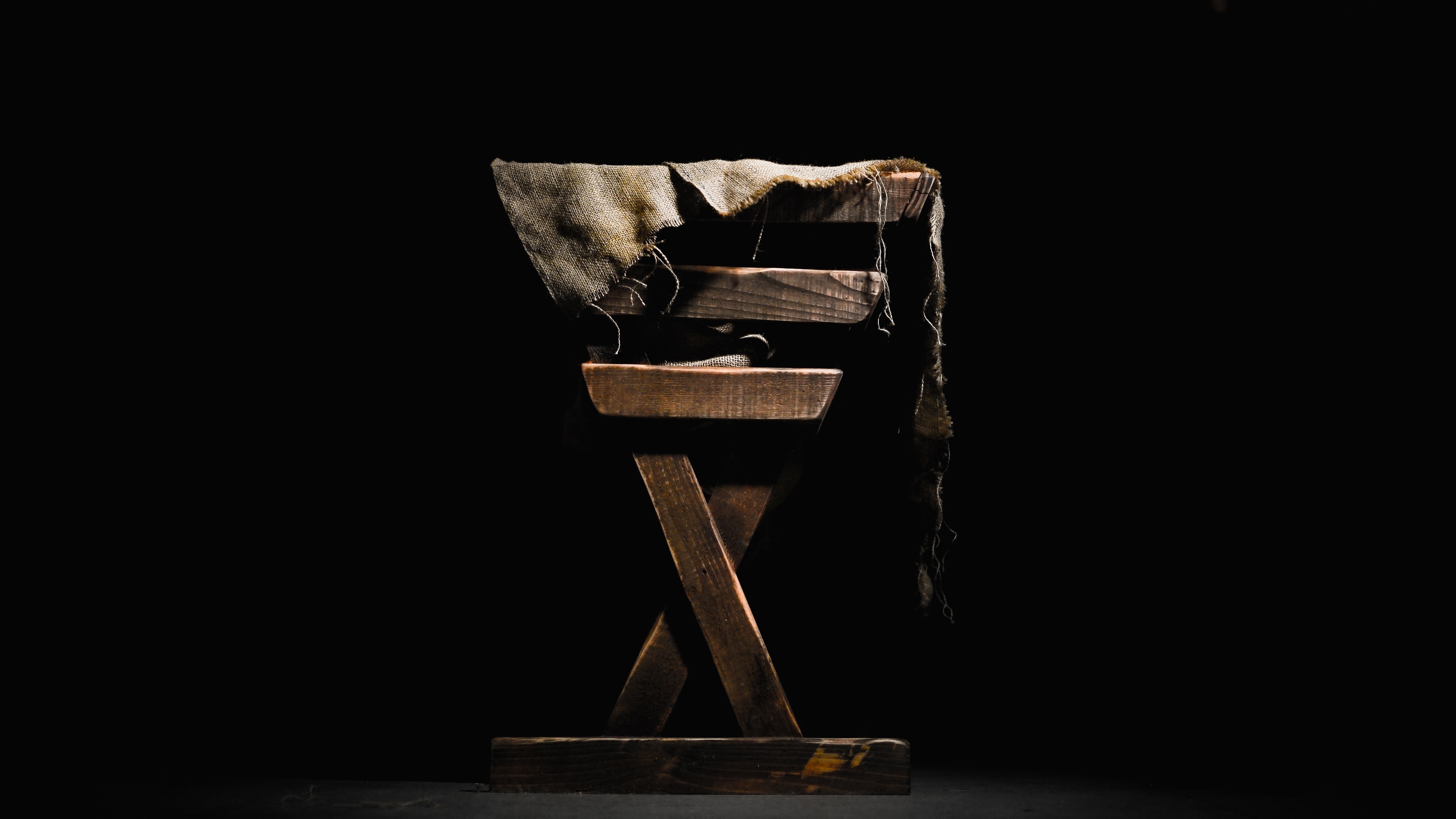 ‘Tis the first night of Christmas. The heavens proclaim:
‘Tis the first night of Christmas. The heavens proclaim: